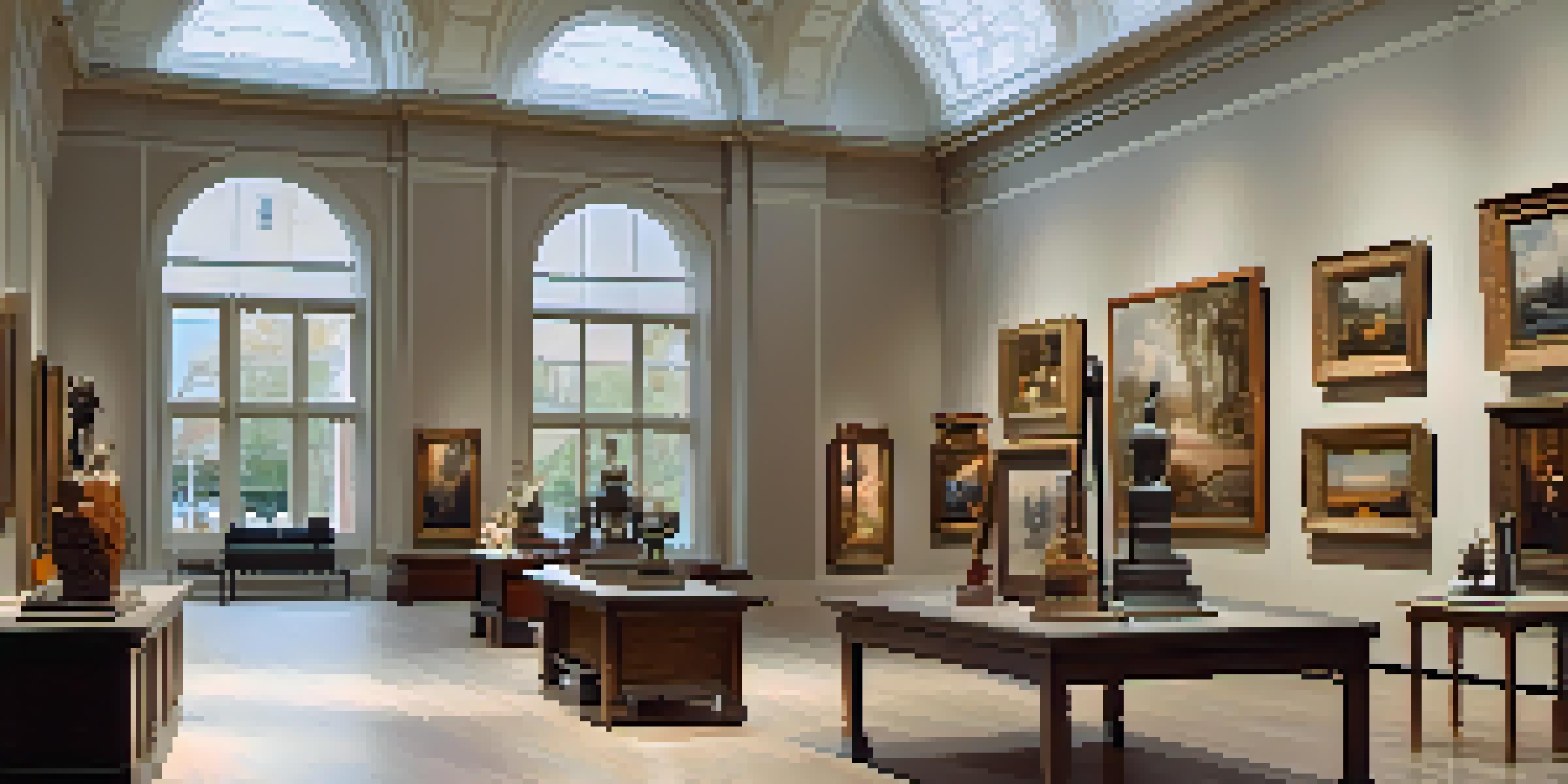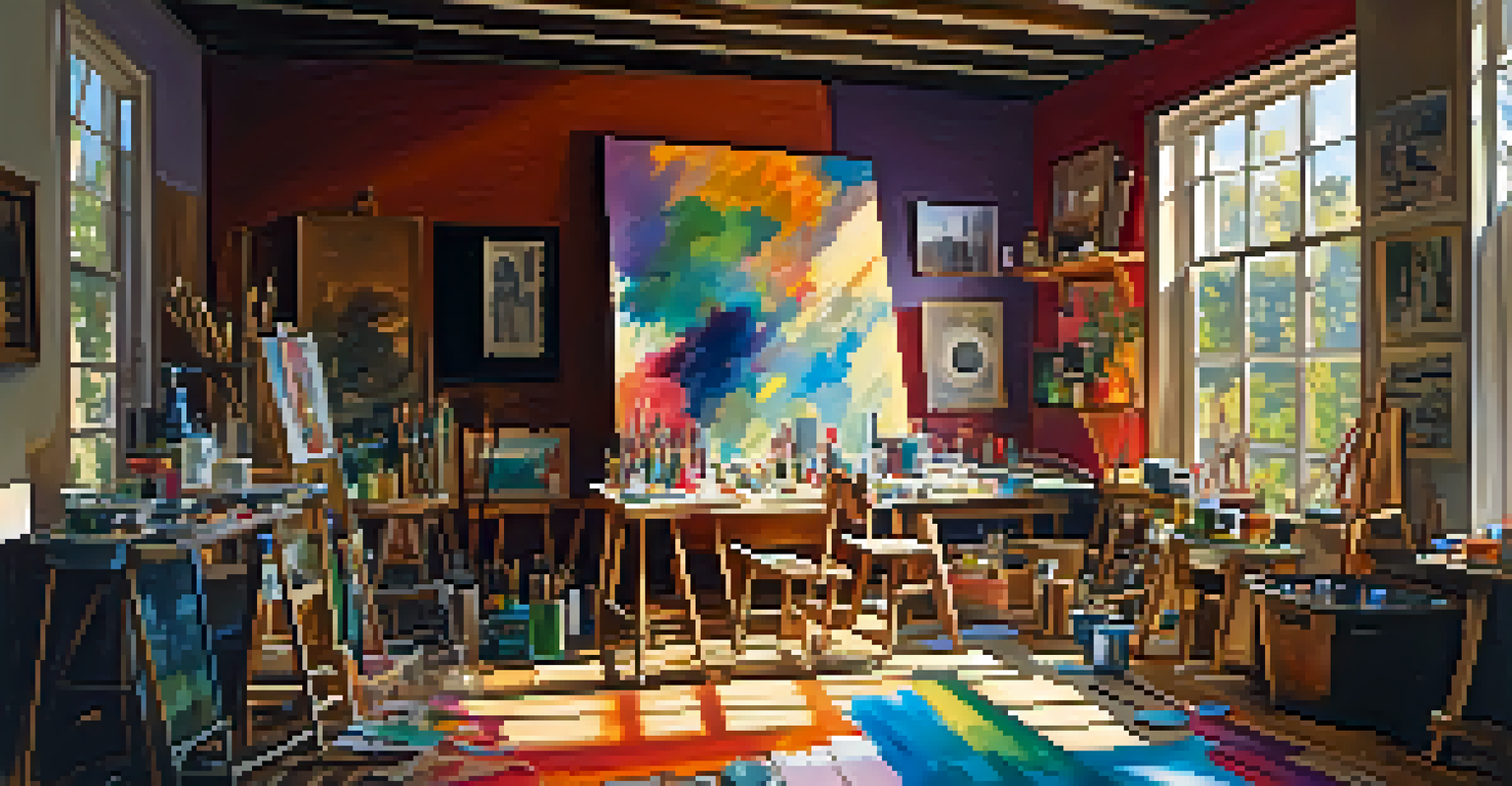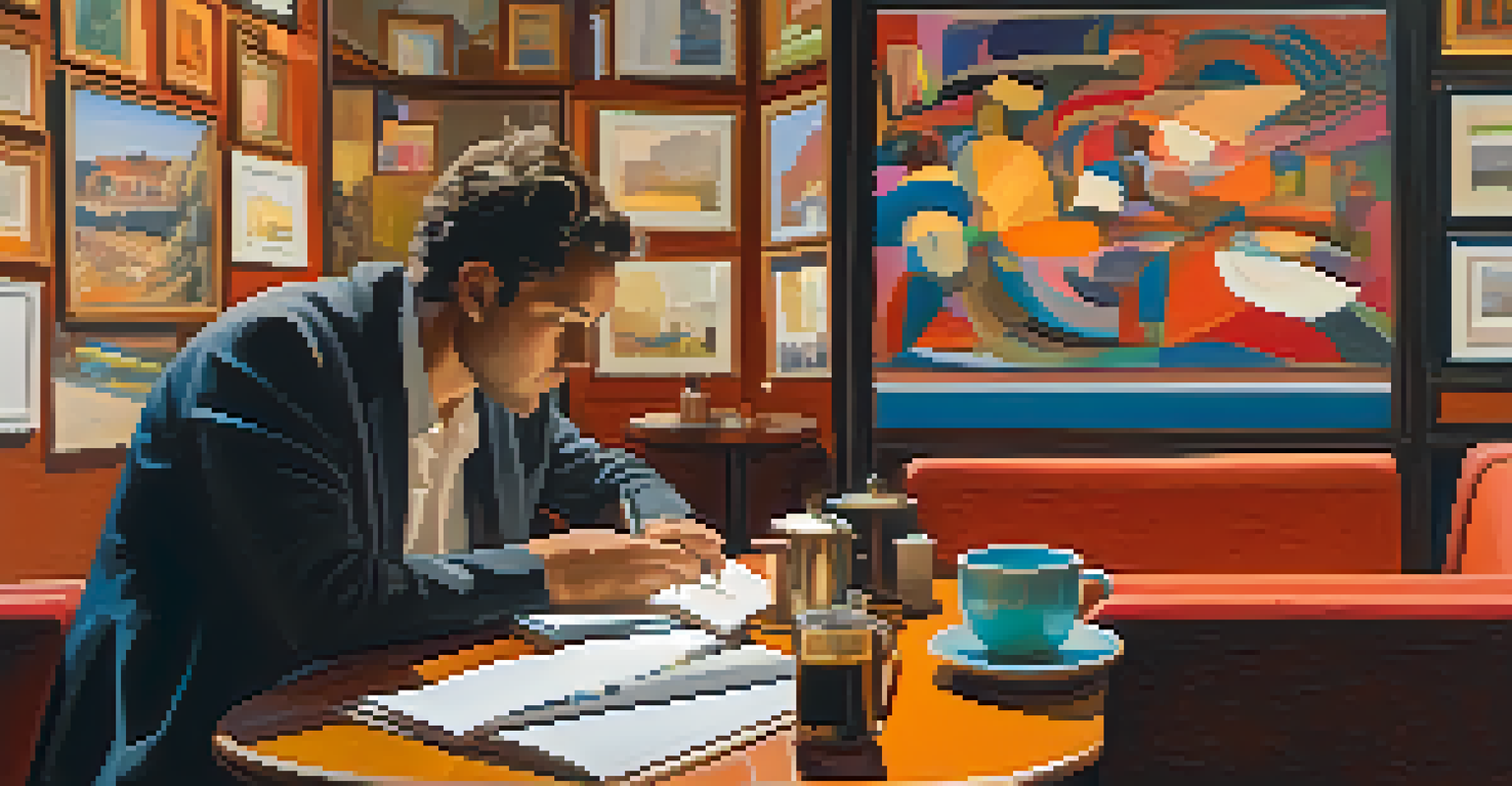The Importance of Objectivity in Art Criticism Today

What Is Objectivity in Art Criticism?
Objectivity in art criticism refers to the ability to evaluate art without personal bias or emotional influence. It invites critics to analyze artworks based on established criteria rather than personal preferences. This approach allows for a more balanced and fair assessment, which is crucial in a field often swayed by subjective opinions.
Art is not freedom from discipline, but disciplined freedom.
For instance, when a critic evaluates a painting, objectivity means considering aspects like technique, composition, and historical context rather than simply stating whether they 'like' it or not. By focusing on these elements, critics can provide insights that help audiences understand the artist's intentions and the artwork's significance. This form of critique promotes a deeper appreciation of art, elevating discussions beyond mere opinions.
However, achieving complete objectivity can be challenging, as every critic is influenced by their experiences and backgrounds. The key is to acknowledge these influences while striving for a balanced perspective, which ultimately enriches the conversation around art.
The Shift Towards Subjectivity in Modern Criticism
In recent years, there has been a noticeable shift towards subjectivity in art criticism. Social media platforms allow anyone to share their thoughts on art, often leading to a more personal and emotional discourse. While this democratization of art criticism has its merits, it can sometimes overshadow the need for objective evaluation.

For example, viral posts or popular opinions can greatly influence public perception of an artwork, regardless of its artistic merit. This trend might encourage critics to prioritize clickbait and sensationalism over thoughtful analysis. As a result, the art world risks becoming dominated by fleeting trends rather than sustained, meaningful critiques.
Importance of Objectivity in Critique
Objectivity allows art critics to evaluate works based on established criteria, promoting a balanced and fair assessment.
Ultimately, while subjectivity can provide valuable perspectives, it’s crucial for critics to maintain a degree of objectivity. Balancing personal insights with a structured evaluation ensures that art criticism remains credible and informative.
The Role of Historical Context in Objectivity
Understanding the historical context of an artwork is vital for achieving objectivity in its criticism. Art does not exist in a vacuum; it is often a reflection of the societal, political, and cultural climate of its time. By examining these factors, critics can offer a more nuanced evaluation that goes beyond personal taste.
The great artist is the simplifier.
For example, consider how the social movements of the 1960s influenced artists like Andy Warhol and Roy Lichtenstein. A critic who understands this context is better equipped to assess their work's significance and impact. Such insights highlight the importance of grounding critiques in the broader historical narrative, ultimately enhancing the audience's understanding.
Moreover, recognizing historical context helps prevent the misinterpretation of artworks. When critics apply objectivity by situating art within its time, they can mitigate the risk of projecting contemporary values onto past creations.
Balancing Personal Insight with Objective Analysis
While objectivity is crucial in art criticism, personal insight can also enrich the evaluation process. Critics who share their subjective experiences can create a more engaging narrative that resonates with audiences. However, striking the right balance between personal input and objective analysis is essential.
For instance, a critic might begin with a personal reaction to an artwork but then transition into a more structured critique that examines technical aspects and historical relevance. This approach not only personalizes the critique but also maintains its credibility. The key is to ensure that personal opinions do not overshadow the objective evaluation.
Subjectivity's Growing Influence
The rise of social media has shifted art criticism towards personal and emotional responses, sometimes overshadowing objective analysis.
Ultimately, integrating personal insight with an objective framework allows critics to connect with their audience while providing valuable insights that enhance understanding and appreciation of art.
The Impact of Cultural Perspectives on Objectivity
Cultural perspectives play a significant role in shaping a critic's viewpoint, making objectivity even more challenging. Different cultures interpret art through varied lenses, and these influences can color evaluations. Acknowledging these cultural differences is essential in striving for objectivity in art criticism.
For example, an artwork may be celebrated in one culture while criticized in another due to differing values and beliefs. Critics who are aware of these cultural nuances can offer a more rounded critique that respects diverse viewpoints. This understanding fosters a global dialogue about art, enriching the criticism landscape.
By embracing cultural perspectives, critics can also highlight the importance of inclusivity in art discussions. This approach not only broadens the conversation but also emphasizes the need for objectivity in recognizing the value of diverse artistic expressions.
The Dangers of Bias in Art Criticism
Bias in art criticism can lead to misrepresentation and unfair evaluations of artworks. When critics allow their personal beliefs or affiliations to influence their critiques, it can skew public perception and diminish the value of the art itself. This danger underscores the need for objectivity in maintaining the integrity of art discussions.
For instance, if a critic has a preference for a particular style or movement, they might overlook the merits of works outside that scope. This tunnel vision not only affects the artist's reputation but can also limit audiences' exposure to diverse forms of expression. By adhering to objective principles, critics can provide a fair platform for all artists.
Cultural Perspectives Matter
Recognizing cultural differences in art interpretation is essential for critics to provide rounded evaluations that respect diverse viewpoints.
Moreover, unchecked bias can perpetuate stereotypes and reinforce existing power dynamics within the art world. Striving for objectivity helps to challenge these biases, advocating for a more equitable and inclusive environment for all artists.
The Future of Objectivity in Art Criticism
As the art world continues to evolve, the role of objectivity in criticism remains crucial. With the rise of digital platforms and the democratization of art discourse, there is an increasing need for critics to uphold standards of objectivity. This future-oriented approach can help navigate the complexities of a rapidly changing environment.
For instance, embracing technology can aid critics in gathering diverse perspectives and data, promoting a more balanced evaluation of art. By leveraging these tools, critics can enhance their understanding and provide insights that resonate with broader audiences. This evolution can foster a richer dialogue about art, encouraging informed discussions.

In conclusion, the future of art criticism lies in the ability to balance objectivity with personal insight, cultural perspectives, and historical context. By committing to these principles, critics can ensure that art remains a vibrant and meaningful part of our society.